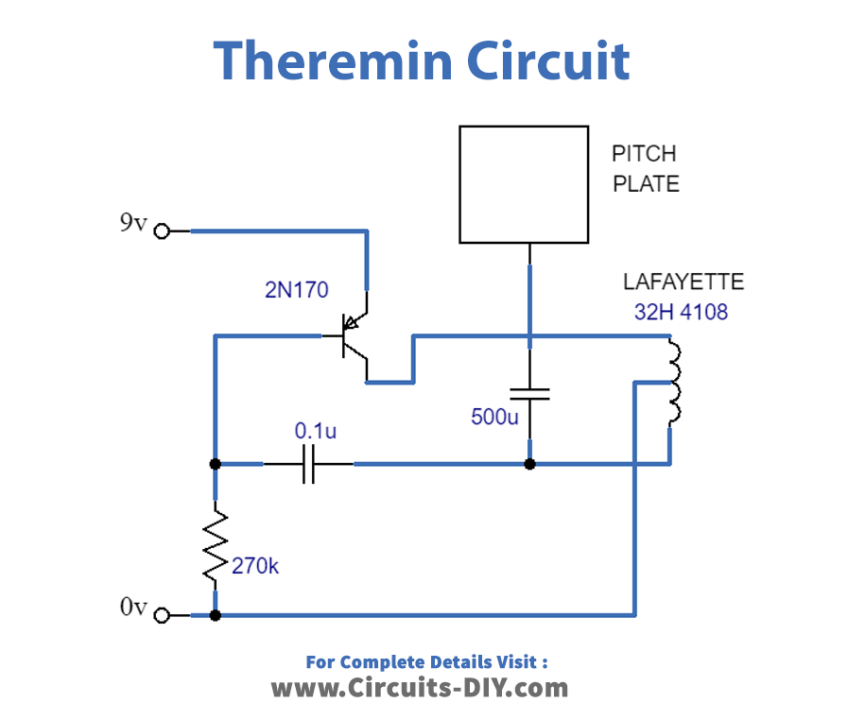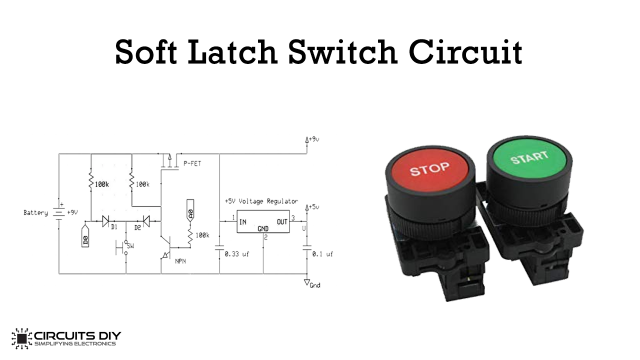Introduction
Have you ever heard of an instrument that can be played without even touching it? Well, such an instrument exists, and it’s called the theremin. Named after its inventor, Professor Theremin, this unique musical instrument uses capacitive proximity to generate musical effects.
The Theremin circuit consists of two protruding rods that serve as the “plates” of a capacitor. In this blog, we’ll dive deeper into the workings of the Theremin circuit, exploring its science. So, get ready to be amazed by this fascinating instrument that has captivated audiences for nearly a century!
Hardware Required
| S.no | Components | Value | Qty |
|---|---|---|---|
| 1 | Transistor | 2N170 | 1 |
| 2 | Capacitor | 0.1, 500uF | 1, 1 |
| 3 | Resistor | 270k | 1 |
| 4 | Inductor | H4108 | 1 |
Circuit Diagram

Working Explanation
The theremin circuit consists of two rods that serve as capacitors, with the performer’s hands acting as the second plates of the capacitors when held near the rods. Changes in capacitance in one of the rods control the tone’s pitch, while changes in the other rod change the tone’s volume.
A simple experimental circuit can be built using a 30cm square plate placed next to a radio receiver tuned to a strong station around 900 kHz to create the Theremin circuit. The coil slug is then adjusted to obtain the most pleasing tone.
When a hand is moved near the plate, the pitch of the tone changes, allowing the performer to create music without actually touching the instrument. This unique feature makes the Theremin circuit a one-of-a-kind musical instrument that has fascinated audiences for nearly a century.
Conclusion
We hope this article has provided an insightful introduction to the workings of the Theremin circuit. We invite you to try building your Theremin circuit and experience the joy of creating music without even touching the instrument. With a bit of creativity and experimentation, the possibilities of the Theremin circuit are endless. So go ahead and try it – we hope you like the circuit as much as we do!













